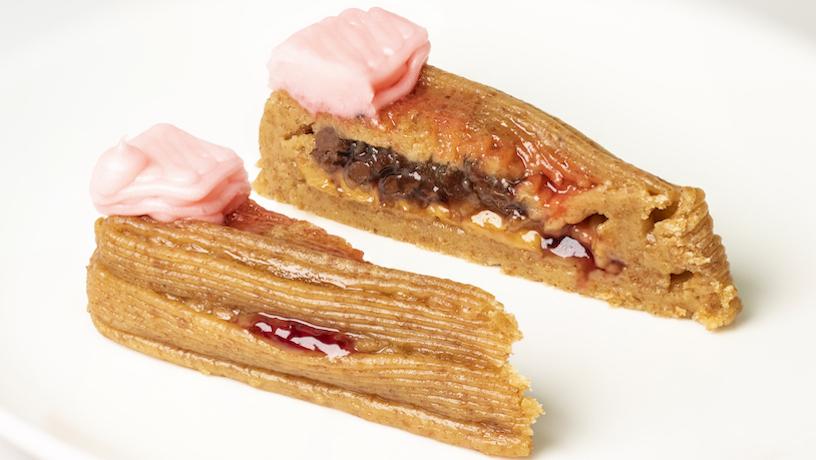There are 73 Michelin-star restaurants in New York, but a Columbia University lab has something that even they can’t touch — a hands-free cheesecake.

Mechanical engineers at Columbia’s Creative Machines Lab are looking to shake up the world of cooking, with the belief that, one day, we could each have our own “personal digital chef.”
To show what 3D printing technology is capable of, the engineers created a seven-ingredient vegan cheesecake, no human assembly needed. The engineers used no special ingredients, only what they could find at a New York grocery store.
The engineers revealed their innovative method in a study published Tuesday.
For the base, the engineers used graham crackers ground with butter into a paste, while the bulk of the cheesecake was made of peanut butter and Nutella. For a little added flare, the engineers gave the cheesecake a strawberry jam and banana puree filling and topped it with frosting and cherry drizzle.
The result is perhaps a little less appetizing than what can be created with human hands. In order for the 3D printer to extrude the ingredients, they all had to be liquids or pastes, which made constructing a self-standing cake rather difficult.
Still, the successful design was certainly a major improvement over one of their first attempts.

Early on, the engineers realized that the flimsiness of their building materials meant they needed to give the cheesecake some structural support. To give the cheesecake its fillings, they had to create interior walls of peanut butter and Nutella into which the softer ingredients, jam and banana puree, could be deposited.

Other 3D printing machines have already been successful in making pizza, bread and pasta and can even decorate cakes. What sets the Columbia lab apart is that its machine is an all-in-one for assembling food and baking it — with a laser.
It took seven failed attempts to create the final cheesecake design. All attempts were tasted by the engineers.
“It definitely tasted like something I hadn’t tried before,” Jonathan Blutinger, lead author of the study, told The Guardian in an interview. “I rather enjoyed it, but it’s not a conventional mix. We’re not Michelin chefs.”
Still, Blutinger is optimistic for the future of 3D-printed food.
“I think it’s an inevitability. Once software touches an industry, we don’t look back. It propels it forward in ways we never thought possible. That hasn’t really happened for food yet,” he said.
“The vision is to have a food printer mixed with a laser cooker that can be a one-stop-shop sort of kitchen appliance. It’s your own personal digital chef.”
Blutinger said cheesecake is the “best thing” their 3D printer can create so far, but it can also “print chicken, beef, vegetables and cheese. Anything that can be turned into a paste, liquid or powder.”
One of the biggest value propositions of 3D-printed food is how precise users can be with their ingredients, breaking down their diets into exact vitamins, macro-nutrients and calorie counts.
“People with dietary restrictions, parents of young children, nursing home dieticians, and athletes alike could find these personalized techniques very useful and convenient in planning meals,” reads a press release from Columbia. “And, because the system uses high-energy targeted light for high-resolution tailored heating, cooking could become more cost-effective and more sustainable.”
Blutinger admits that cooking with lasers might not be within everyone’s comfort zone. He added that their team is working on a nutritional study about how lasers affect food on a molecular level to hopefully increase the public’s comfort level with the novel cooking method.
It’s uncertain to what extent 3D printing will impact the world of food production. Andrew Feenberg, professor of philosophy of technology at Simon Fraser University, believes that we’re more likely to see 3D-printed food in cafeterias and restaurants than at home.
He points to the Segway as an example. The “personal transporter” was meant to revolutionize the way humans move, but is now used more frequently by warehouse workers.
“It might turn out to be more useful in restaurants and cafeterias where the loading of ingredients and software programs could be done during slack hours,” Feenberg told the Guardian. “Customers would be unaware of the ‘unnatural’ aspect of the process, which would bother home users. I do not look forward to having a 3D food printer chez moi.”








Comments